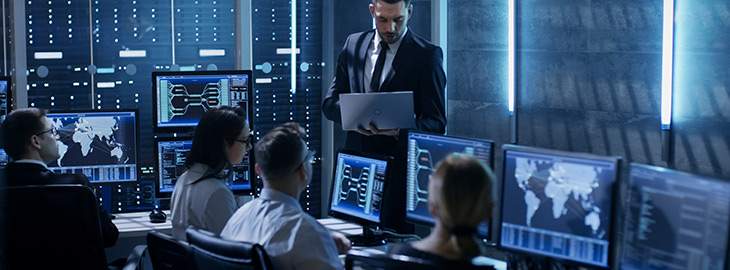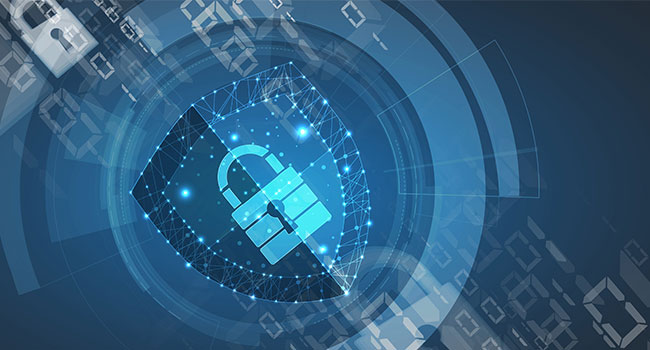A Blueprint for Corporate Security Excellence: Safeguarding Your Enterprise
A Blueprint for Corporate Security Excellence: Safeguarding Your Enterprise
Blog Article
From Cybersecurity to Physical Steps: Strengthening Company Safety in a Changing Globe
By combining the staminas of both cybersecurity and physical security, companies can create a detailed defense method that resolves the varied variety of hazards they encounter. In this conversation, we will certainly explore the transforming hazard landscape, the requirement to incorporate cybersecurity and physical safety, the implementation of multi-factor authentication actions, the significance of worker recognition and training, and the adjustment of safety and security measures for remote workforces. By examining these vital areas, we will obtain useful insights right into just how companies can strengthen their company safety and security in an ever-changing globe.
Comprehending the Altering Hazard Landscape
The developing nature of the contemporary globe requires a detailed understanding of the changing hazard landscape for efficient corporate protection. In today's digital and interconnected age, risks to company safety and security have come to be much more complex and sophisticated. As technology developments and organizations come to be increasingly dependent on electronic infrastructure, the capacity for cyberattacks, information violations, and various other safety breaches has dramatically increased. It is important for organizations to stay informed and adjust their protection determines to address these developing hazards.
One key facet of recognizing the changing threat landscape is acknowledging the various sorts of dangers that companies deal with. Cybercriminals are regularly creating brand-new methods to manipulate susceptabilities in computer system systems and networks. These hazards can vary from malware and ransomware attacks to phishing scams and social engineering tactics. Additionally, physical dangers such as burglary, criminal damage, and business espionage stay common issues for services.
Tracking and analyzing the danger landscape is crucial in order to determine potential risks and susceptabilities. This includes staying upgraded on the latest cybersecurity fads, assessing danger intelligence records, and carrying out regular threat evaluations. By recognizing the altering threat landscape, companies can proactively carry out suitable safety and security procedures to reduce threats and safeguard their possessions, credibility, and stakeholders.
Integrating Cybersecurity and Physical Protection
Incorporating cybersecurity and physical protection is important for comprehensive company protection in today's interconnected and electronic landscape. As companies progressively depend on technology and interconnected systems, the borders between physical and cyber dangers are ending up being blurred. To successfully guard against these threats, a holistic strategy that incorporates both cybersecurity and physical safety measures is necessary.
Cybersecurity concentrates on protecting electronic assets, such as information, systems, and networks, from unapproved access, disruption, and burglary. Physical safety and security, on the various other hand, encompasses steps to safeguard physical assets, people, and centers from vulnerabilities and dangers. By incorporating these 2 domains, organizations can attend to susceptabilities and hazards from both electronic and physical angles, thus improving their general safety and security stance.
The assimilation of these 2 disciplines permits an extra thorough understanding of protection threats and allows a unified reaction to events. Physical access controls can be improved by incorporating them with cybersecurity procedures, such as two-factor authentication or biometric recognition. Cybersecurity steps can be complemented by physical security procedures, such as surveillance video cameras, alarms, and secure accessibility factors.

Applying Multi-Factor Authentication Measures
As companies progressively focus on comprehensive security procedures, one reliable approach is the application of multi-factor verification actions. Multi-factor verification (MFA) is a protection method that calls for users to give several types of recognition to access a system or application. This approach adds an added layer of defense by combining something the user understands, such as a password, with something they have, like a safety or a finger print token.
By executing MFA, companies can significantly enhance their safety pose - corporate security. Standard password-based verification has its limitations, as the original source passwords can be easily compromised or forgotten. MFA minimizes these risks by adding an additional verification factor, making it harder for unauthorized individuals to access to sensitive details
There are numerous kinds of multi-factor verification techniques offered, including biometric authentication, SMS-based confirmation codes, and equipment symbols. Organizations require to examine their particular requirements and choose the most appropriate MFA remedy for their requirements.
Nevertheless, the application of MFA must be thoroughly planned and executed. It is crucial to strike a balance in between safety and usability to prevent user frustration and resistance. Organizations must also think about potential compatibility concerns and provide adequate training and assistance to make sure a smooth shift.
Enhancing Staff Member Recognition and Training
To enhance corporate protection, organizations have to focus on improving staff member understanding and training. In today's swiftly advancing hazard landscape, workers play an important duty in protecting an organization's delicate information and properties. Sadly, lots of safety and security violations occur because of human mistake or lack of recognition. Companies need to invest in detailed training programs to enlighten their employees concerning prospective dangers and the ideal techniques for alleviating them.
Efficient staff member recognition and training programs need to cover a wide variety of topics, consisting of data security, phishing attacks, social engineering, password hygiene, and physical safety measures. These programs ought to be tailored to the particular needs and obligations of various worker functions within the organization. Routine training workshops, sessions, and simulations can assist workers establish the required skills and understanding to determine and respond to protection threats effectively.
Moreover, companies should urge a society of safety and security understanding and offer ongoing updates and tips to keep employees educated concerning the most up to date threats and mitigation methods. This can be done through inner communication networks, such as newsletters, intranet sites, and email projects. By promoting a security-conscious labor force, organizations can dramatically decrease the chance of safety and security cases and protect their important properties from unauthorized access or compromise.

Adapting Protection Steps for Remote Workforce
Adjusting company safety and security steps to fit a remote labor force is important in guaranteeing the security of delicate info and properties (corporate security). With the raising fad of remote job, companies must implement suitable safety and security procedures to alleviate the dangers connected with this brand-new way of functioning
One essential element of adjusting security actions for remote job is establishing safe and secure interaction networks. Encrypted messaging platforms and online private networks (VPNs) can help protect sensitive details and protect against unapproved accessibility. In addition, organizations ought to enforce the usage of solid passwords and multi-factor Click Here verification to improve the safety and security of remote access.
An additional crucial consideration is the implementation of secure remote accessibility services. This includes offering staff members with safe and secure access to corporate resources and information through digital desktop computer facilities (VDI), remote desktop computer protocols (RDP), or cloud-based remedies. These modern technologies make sure that sensitive info stays protected while enabling staff members to execute their roles properly.

Last but not least, comprehensive safety and security understanding training is critical for remote employees. Training sessions need to cover ideal practices for securely accessing and dealing with sensitive information, determining and reporting phishing efforts, and keeping the total cybersecurity health.
Verdict
Finally, as the risk landscape continues to develop, it is important for companies to strengthen their safety determines both in the cyber and physical domains. Integrating cybersecurity and physical safety and security, executing multi-factor authentication procedures, and improving worker awareness and training are important actions towards accomplishing robust corporate security. Additionally, adjusting safety measures to fit remote labor forces is important in today's changing globe. By applying these procedures, organizations can mitigate risks and shield their beneficial possessions from potential threats.
In this discussion, we will explore the transforming danger landscape, the need to integrate cybersecurity and physical security, the application of multi-factor authentication procedures, the importance of staff member awareness and training, and the adjustment of security procedures for remote workforces. Cybersecurity steps can be enhanced by physical safety and security actions, such as surveillance cams, alarms, and protected accessibility points.
As companies increasingly prioritize thorough safety measures, one effective technique is the execution of multi-factor authentication steps.In final thought, as the hazard landscape continues to develop, it is vital for companies to enhance their safety measures both in the cyber and physical domains. Incorporating cybersecurity and physical protection, applying multi-factor authentication procedures, and boosting staff member recognition and training explanation are important steps in the direction of attaining durable business safety and security.
Report this page